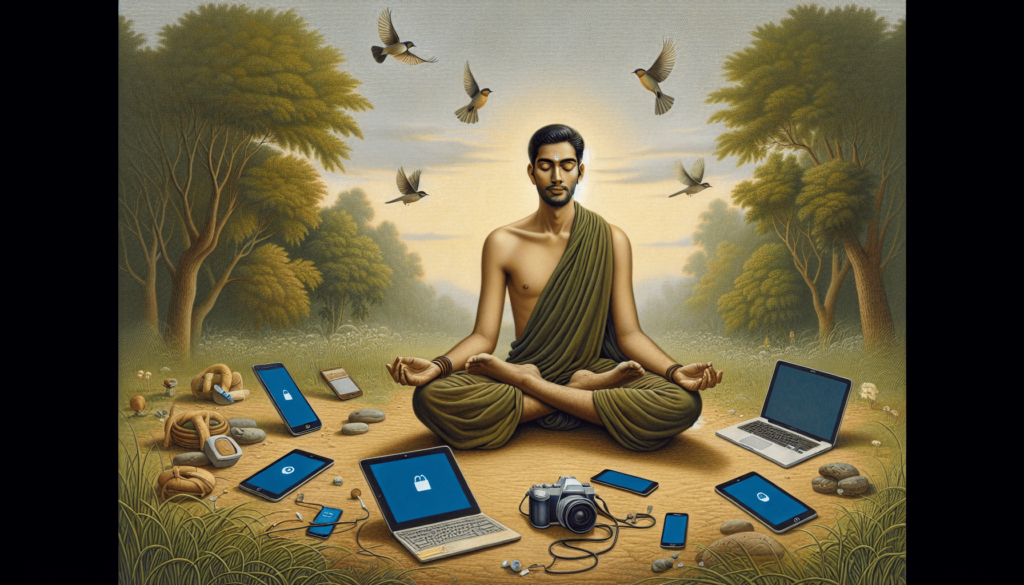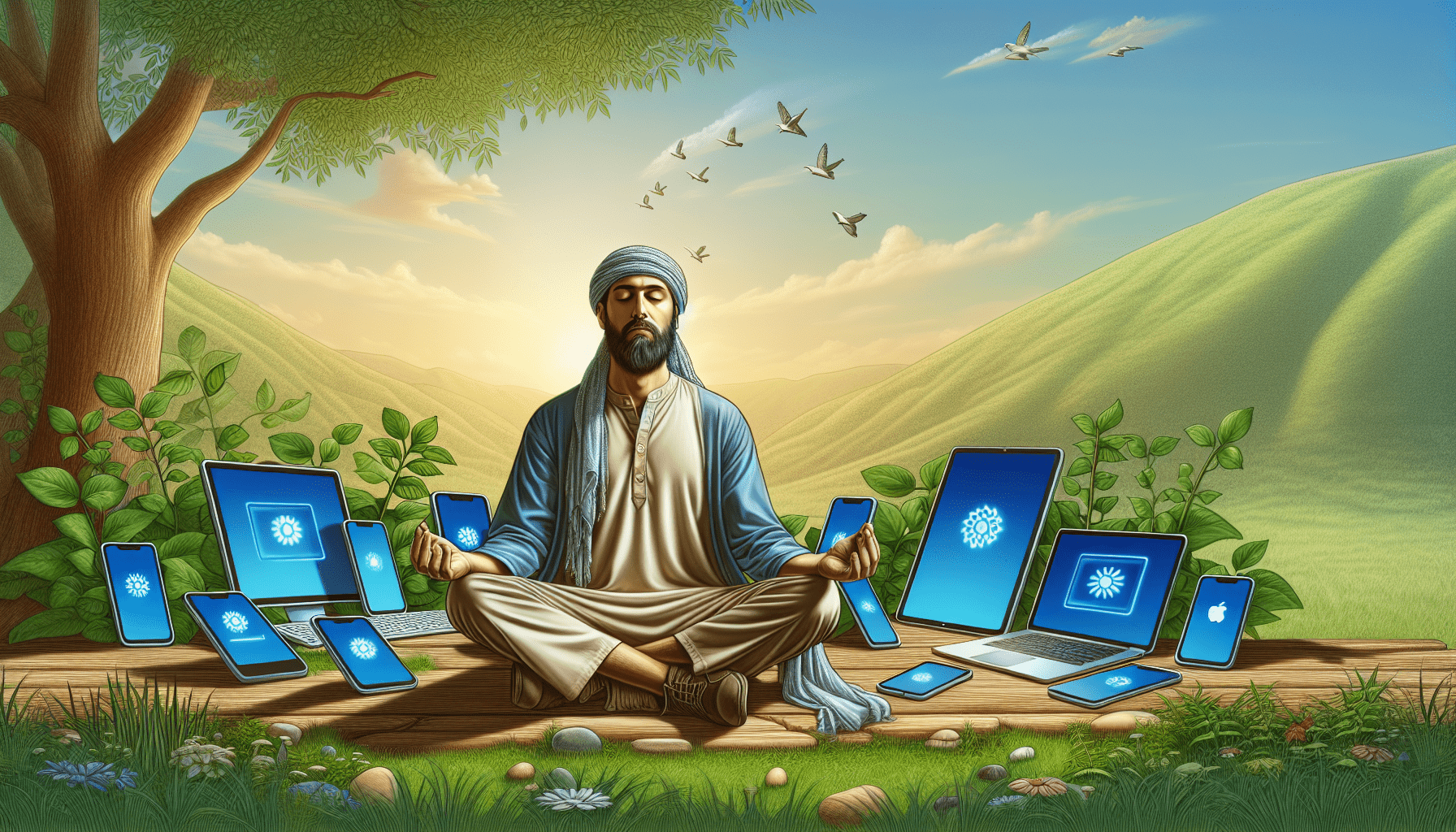How Can You Manage Digital Overload in a Holistic Way?
In today’s fast-paced world, it’s easy to feel overwhelmed by the constant stream of digital information bombarding you from all angles. From emails and social media notifications to work-related tasks and personal obligations, managing digital overload can feel like an impossible task. However, by taking a holistic approach to managing digital overload, you can find balance and reclaim control of your digital life. Let’s explore some holistic strategies to help you navigate the digital onslaught with ease.
Establishing Boundaries with Technology
Setting boundaries with technology is essential for managing digital overload. By establishing limits on the amount of time you spend on electronic devices, you can reduce the negative impact of digital distractions on your mental health and overall well-being. Consider implementing tech-free zones in your home, such as the bedroom or dining room, to create a more peaceful environment free from digital interruptions.
Taking Regular Breaks from Screens
Taking regular breaks from screens is crucial for combating digital overload. Make it a point to schedule short breaks throughout your day to give your eyes and brain a rest from constant screen exposure. Use this time to engage in activities that promote relaxation and mental clarity, such as going for a walk, practicing mindfulness meditation, or simply taking a few deep breaths.
Practicing Mindful Tech Usage
Mindful tech usage involves being intentional and present with your digital devices. Instead of mindlessly scrolling through social media or checking emails every few minutes, practice mindfulness by focusing on one task at a time and being fully engaged in the present moment. By cultivating awareness and purposeful engagement with technology, you can reduce feelings of overwhelm and improve your overall digital well-being.
Strategies for Creating a Digital Detox Plan
Embarking on a digital detox can be an effective way to reset your relationship with technology and reduce digital overwhelm. By disconnecting from screens and digital devices for a designated period of time, you can gain clarity, improve focus, and restore balance in your life. Here are some strategies for creating a successful digital detox plan:
Set Clear Goals and Intentions
Before starting a digital detox, it’s important to set clear goals and intentions for the experience. Ask yourself why you’re choosing to disconnect from technology and what you hope to gain from the detox. Whether it’s to reduce stress, increase productivity, or reconnect with loved ones, having a clear sense of purpose will guide you through the detox process and keep you focused on your desired outcomes.
Gradually Reduce Screen Time
Rather than going cold turkey, consider gradually reducing your screen time leading up to your digital detox. This can help ease the transition and minimize withdrawal symptoms associated with disconnecting from technology. Start by setting boundaries around when and how you use digital devices, and gradually decrease your screen time each day to prepare yourself for a successful detox experience.
Engage in Offline Activities
During your digital detox, make a conscious effort to engage in offline activities that bring you joy and fulfillment. Whether it’s reading a book, taking up a new hobby, or spending quality time with loved ones, embracing offline experiences can help you reconnect with the world beyond screens and rediscover the beauty of living in the present moment.

The Importance of Digital Wellness Practices
Digital wellness practices are essential for maintaining a healthy and balanced relationship with technology. By incorporating mindfulness, intentionality, and self-care into your daily routine, you can cultivate a sense of digital well-being and reduce the negative effects of digital overload on your mental and emotional health. Here are some key digital wellness practices to incorporate into your life:
Establishing a Digital Curfew
Setting a digital curfew involves establishing a designated time each day when you disconnect from screens and engage in non-digital activities. This can help promote better sleep hygiene, reduce exposure to blue light before bedtime, and create a more relaxing evening routine free from digital distractions. Consider implementing a digital curfew an hour before bedtime to unwind and prepare your mind and body for restful sleep.
Practicing Digital Mindfulness
Digital mindfulness involves being aware of your digital habits and making conscious choices about how you engage with technology. By cultivating awareness and intentionality in your online interactions, you can reduce mindless scrolling, minimize distractions, and foster a more meaningful connection with digital content. Practice digital mindfulness by setting intentions before using technology, taking breaks to check in with yourself, and maintaining a healthy balance between online and offline activities.
Engaging in Regular Digital Detoxes
Regular digital detoxes are essential for periodically unplugging from technology and recharging your mind and body. By taking a break from screens and digital devices, you can reduce stress, improve focus, and enhance your overall well-being. Consider scheduling weekly or monthly digital detox days to reset your relationship with technology and prioritize self-care and offline experiences.
Incorporating Holistic Wellness Practices into Your Digital Routine
Integrating holistic wellness practices into your digital routine can help you find balance, reduce overwhelm, and enhance your overall well-being. By prioritizing self-care, mindfulness, and intentional tech usage, you can create a harmonious relationship with technology and navigate the digital landscape with ease. Here are some holistic wellness practices to incorporate into your digital routine:
Setting Personalized Digital Boundaries
Personalized digital boundaries involve determining what works best for you in terms of managing digital overload. Consider your unique needs, preferences, and lifestyle when setting boundaries around technology use. Whether it’s limiting screen time, establishing tech-free zones, or creating a digital detox plan that aligns with your schedule, customizing your approach to digital wellness can help you find sustainable solutions that support your well-being.
Cultivating Mind-Body Awareness
Mind-body awareness involves tuning into the signals and sensations of your body to understand how technology impacts your physical and emotional well-being. Pay attention to how excessive screen time affects your posture, eyesight, and energy levels, and make adjustments accordingly to minimize discomfort and optimize your health. Practice mind-body awareness by taking regular breaks, stretching your body, and practicing relaxation techniques to counteract the negative effects of digital overload.
Prioritizing Mental Health and Emotional Well-Being
Prioritizing mental health and emotional well-being is crucial for managing digital overload and maintaining a healthy relationship with technology. Take time to check in with yourself regularly, practice self-care activities that nourish your soul, and seek support from trusted friends, family members, or mental health professionals when needed. By prioritizing your mental and emotional well-being, you can create a strong foundation for navigating the challenges of the digital world with resilience and grace.

Conclusion
In conclusion, managing digital overload in a holistic way involves establishing boundaries with technology, taking regular breaks from screens, and practicing mindful tech usage. By creating a digital detox plan, incorporating digital wellness practices, and integrating holistic wellness practices into your digital routine, you can find balance, reduce overwhelm, and enhance your overall well-being in the digital age. Remember to prioritize self-care, mindfulness, and intentional tech usage to cultivate a harmonious relationship with technology and live a more fulfilling and connected life.

